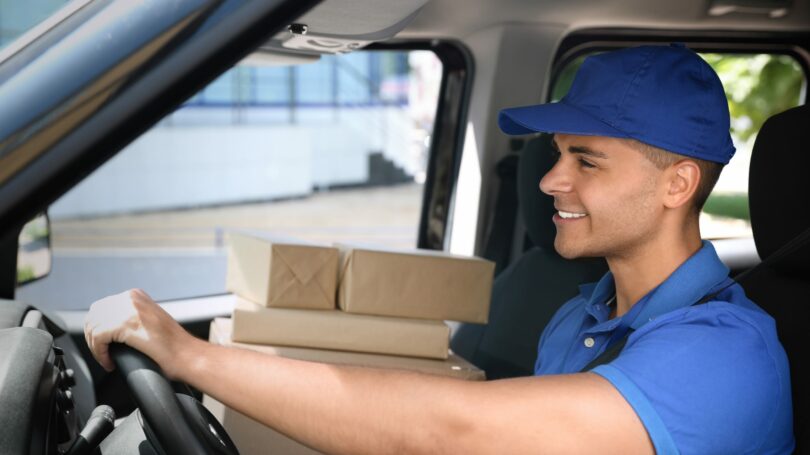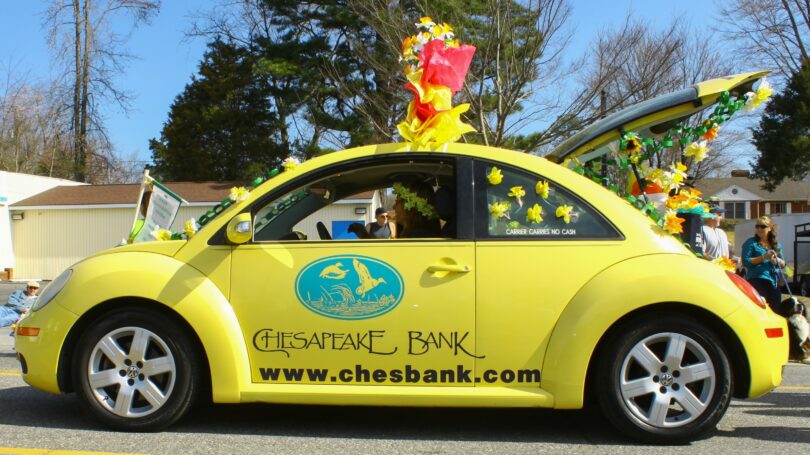Easy Way to Earn Money in Car Crashers 2
You don't have to look too far for opportunities to earn extra cash. Market research companies offer good money for consumers' honest opinions and reactions in focus groups and product testing studies.
Cash-back apps like Ibotta or Rakuten pay shoppers to make everyday purchases through affiliate websites. Health care organizations generously compensate fluid and tissue donors willing to part with plasma, sperm, and eggs – though the more invasive forms of medical donation come with risks.
Car owners and lessees can add another opportunity to the list: monetizing their personal vehicles.
Pro tip: If you finance your car, you might be paying too much on your monthly payments. You could save $100+ when you refinance with Caribou. Check your interest rate without impacting your credit score. Learn more about Caribou.

Motley Fool Stock Advisor recommendations have an average return of 372%. For $79 (or just $1.52 per week), join more than 1 million members and don't miss their upcoming stock picks. 30 day money-back guarantee. Sign Up Now
How to Make Money With Your Car
Vehicular side hustles come in many forms. Although the most lucrative opportunities generally involve significant amounts of driving, monetizing your vehicle doesn't necessarily require you to put extra miles on your car. Wrapping your car in advertising is a classic passive income opportunity, for instance, that typically doesn't increase your total miles driven.
The following are popular, legitimate ways to earn real money with a personal vehicle. Your actual range of options depends on the age and condition of your car, the opportunities available in your geographical area, and your personal preferences.
1. Drive for a Ridesharing App

Becoming a ridesharing driver is a no-nonsense way to make money with your car. You give people rides from point A to point B, they pay through the app, and you get most of the proceeds. It's easy.
That doesn't mean it's without its downsides. Ridesharing drivers need to pass driving record and criminal background checks, meet minimum vehicle age and quality standards, and cover most vehicle expenses: gas, insurance, maintenance, and repairs. Drivers pay tolls out of pocket, but they're added to rider fares and reimbursed after the fact.
Profitable ridesharing operators typically don't keep 9-to-5 driving schedules, either. In most ridesharing markets, peak driving periods fall during weekday rush hours and in the hours leading up to bar closing time on weekends. If you're an early-to-bed kind of person, or too exhausted from your day job to drive late into the evening, you're unlikely to maximize your ridesharing earning potential.
Ridesharing operators' hourly earnings vary widely. Optimistic projections that have drivers earning $25 per hour or more during peak periods may not account for all driver expenses, nor for vehicle depreciation.
Moreover, the crush of new ridesharing drivers has apparently depressed earnings. The average driver take-home pay fell by 50% from 2013 to 2018, to $762 per month, according to a study by JPMorgan Chase.
Still, driving for a ridesharing app in your spare time is a great way to press your car into money-making service. Depending on where you live, your options include:
- Uber. Uber is the most popular U.S. ridesharing app. Drivers must be 21 years of age or older and U.S.-licensed, with relatively clean driving records and at least one year of driving experience. Vehicles must be newer than 15 years old and have at least four doors; requirements are stricter in some cities and states. Drivers who don't own their own cars can rent vehicles on an hourly, weekly, or long-term basis through Uber's vehicle rental partners. Rental fees may reduce your net earnings, however.
- Lyft. Lyft is Uber's main U.S. competitor. Its biggest advantage for drivers is that in-app tipping is customary. Lyft's car and driver requirements are similar to Uber's. Drivers must be 21 years old with U.S. driver's licenses and relatively clean driving records. Vehicles must be four-door compacts or larger (no subcompacts), newer than 15 years old, and meet all applicable city and state requirements (which may be stricter than Lyft's basic requirements). Drivers who don't own their own cars can rent vehicles through Lyft Express Drive, though rental fees may reduce their net earnings. Lyft Express Drive requires a rental commitment of at least seven days.
- Wingz. Wingz is a smaller ridesharing service that primarily serves major metropolitan airports, though it's also carved out niches around high-profile events and in senior transportation in some big U.S. cities. With longer, more predictable rides that can be scheduled up to two months in advance, Wingz may be a better fit for drivers who crave predictability. However, Wingz fares are comparable to Uber and Lyft fares, so it's not clear that Wingz drivers earn more than their on-demand peers. Plus, Wingz drivers are obligated to wait at pickup locations longer than Uber and Lyft drivers, who typically ditch no-show fares after five minutes. Wingz holds drivers and vehicles to stricter standards too. Drivers must pass in-person and online orientation and knowledge exams, and vehicles must be no older than five years.
- Local Alternatives. No other ridesharing app has widespread traction in the United States, but smaller, homegrown alternatives may exist in your area. Juno, for instance, is popular with drivers and riders in the New York City area. With in-app tipping and better base compensation than Uber or Lyft, Juno bills itself as "the socially responsible way to ride" – and makes no secret of its mission to poach highly rated drivers from its two main competitors.
Bear in mind that ridesharing apps aren't exclusive. Drivers approved to drive for both apps typically switch between Uber and Lyft when they're accepting rides, reducing downtime between rides and thereby boosting hourly earnings.
2. Deliver Food

In college, I worked 15 or 20 hours per week as a delivery driver for a local restaurant chain, padding my budget and staying out of trouble. That was before apps such as DoorDash and Uber Eats were commonplace. Today, I'd be just as likely to deliver for multiple restaurants through one of these popular apps:
- DoorDash. DoorDash drivers, or Dashers, must be 18 years old and have valid driver's licenses, active auto insurance policies, and clean driving records. Unlike ridesharing services, DoorDash doesn't impose vehicle requirements. If your car runs, you can use it to deliver food. If you don't have a car, you can use a scooter, motorcycle, or pedal bike as well.
- Uber Eats. Uber Eats drivers must meet the minimum age requirement to drive in their location (which can be up to and sometimes older than 21 years old), have at least one year of driving experience, and possess a valid driver's license, registration, and insurance. Unlike most other delivery apps, Uber Eats imposes minimum vehicle age requirements. If your car is older than 20 years, you're unlikely to qualify. On the bright side, Uber Eats offers payouts up to five times daily, so if you're driving primarily to earn spending money, you can access it soon after you earn it.
- Postmates. Postmates isn't limited to food delivery. If you sign up as a Postmate, you have the option to deliver groceries, retail goods, clothing, and whatever else is available through Postmates in your area. Driver qualification requirements are comparable to those of other food delivery apps.
- Grubhub. Grubhub drivers must be at least 19 years old with valid driver's licenses and auto insurance. Grubhub runs a criminal background check on all drivers, but it's unclear what information counts as disqualifying.
Being a food delivery app driver is similar to being a ridesharing driver, minus the human passengers. Peak hours are a little different. Most food delivery drivers work at lunchtime and dinnertime, with the latter being better for drivers with 9-to-5 jobs.
And because app-based food delivery drivers are dependent on human food prep workers, the pickup process isn't always seamless. I'm surprised these days when I walk into a busy takeout restaurant and don't see a cluster of forlorn drivers waiting for their orders to be filled.
Still, signing up with multiple food delivery apps to capture the highest possible number of orders may be a better bet than throwing all your chips in with a single restaurant, as I did.
3. Deliver Other Goods

If the thought of delivering only prepared food strikes you as monotonous, why not branch out? Consider these non-restaurant (or not-only-restaurant) delivery options:
- Postmates. Postmates doesn't formally distinguish between its restaurant delivery and non-restaurant delivery operations. If you sign up for Postmates, there's a good chance you'll find yourself delivering more than just pre-made meals.
- Instacart. Instacart is a grocery delivery service that uses independent contractors to fill and deliver customers' grocery orders. Full-service shoppers, as they're known, receive orders on their apps, visit the grocery store to assemble them, and deliver bags to customers' doorsteps. Shoppers must be 18 years old, have "reliable access to a vehicle," and be able to lift up to 40 pounds without accommodation.
- Shipt. Shipt delivers groceries, pet supplies, household goods, and anything else available for sale at partner retailers like Target, CVS, Petco, and a host of regional supermarket chains. Shipt's membership model compels customers to order more frequently, ensuring a steadier flow of orders for shoppers. The pay isn't bad, either – according to Shipt, regular shoppers can earn up to $22 per hour, though expenses take a bite out of net earnings. Shoppers must have valid driver's licenses and auto insurance policies, reliable vehicles, and the ability to lift up to 40 pounds without accommodation.
- Amazon Flex. Until drones replace its human delivery personnel, Amazon Flex promises independent contractor drivers up to $25 per hour to deliver on their own time, the retail behemoth claims. (After expenses, actual earnings are likely significantly lower.) Amazon Flex drivers must have valid driver's licenses, active auto insurance, and mid-size four-door sedans or larger.
- Specialized Delivery Services. In large cities, local delivery is a big business. New York City is served by a slew of local, regional, and national alcohol delivery companies, for instance; Time Out New York reviewed nine of the best in early 2019. Dropoff, a courier service specializing in same-day delivery, serves more than a dozen major U.S. cities.
Again, you're best off putting your eggs in multiple delivery baskets – say, putting in your Instacart hours during peak weekend shopping hours and driving for Amazon Flex on weekday evenings.
As a practical matter, services that require you to interact with a wider range of retail partners, such as Postmates, may be less predictable – and less efficient – than services that involve a relative handful of partners (such as Instacart) or few stops to pick up new wares (such as Amazon Flex).
4. Wrap Your Car in Advertising

If you have a newer vehicle and a long commute, your car may be a good candidate to wrap in removable advertising decals.
The main advantage of wrapping your car in advertising versus delivering goods all over town is that you may not have to drive any more than normal, provided you meet advertisers' minimum miles-driven requirements. Because per-mile pay is relatively low, it's probably not worth your time to artificially inflate your mileage by driving aimlessly around town – and unless you have an all-electric vehicle, that's not an environmentally responsible pursuit, anyway.
The United States' two best-known car-wrapping companies are:
- Carvertise. Carvertise matches drivers with brands looking to advertise in areas where they regularly drive. To qualify, drivers must operate vehicles no older than 10 years with factory finish paint jobs, have clean driving records, and drive at least 30 miles per day. Drivers typically earn $100 per month, with the potential for up to $200 per month for high-paying campaigns and occasional opportunities to earn $30 per hour to park in specific locations. Drivers generally don't get to choose the brand they're matched with.
- Wrapify. Wrapify works with blue-chip brands such as Microsoft, Zillow, and Alaska Airlines. As with Carvertise, drivers are matched with brands that want to advertise where they usually drive. Fully wrapped cars – where the wrap completely covers the factory paint job – can earn up to $450 per month, according to Wrapify, but $200 to $300 is more typical.
Carvertise and Wrapify are legitimate enterprises, but not all car advertising offers are aboveboard. The Federal Trade Commission warns drivers to be on the lookout for check cashing scams involving too-good-to-be-true car wrap solicitations. Steer clear of these scams by ignoring car wrap offers on social media and scam-prone digital classified websites such as Craigslist. And don't accept any car wrap offer that requires you to pay upfront for your wrap.
5. Rent Out Your Car When You're Not Using It

If you own a car that you don't need to use every day, you can make it available for short-term use to locals who don't own cars and travelers who don't want to bother with traditional rentals while they're in town. "Car sharing" is the official term, but feel free to think of it as "Airbnb for cars."
As with wrapping your car in advertising, one advantage of renting out your car when you're not using it is that there's no need to drive any more than usual. The downside is that, unlike car wraps, short-term car rentals inevitably put extra miles on your car, which means extra wear and tear.
And, obviously, you can't use your vehicle while it's rented out – no last-minute trips to the store to pick up that one missing dinner ingredient.
Nevertheless, making your vehicle available for short-term rentals when you know you won't need it is a potentially lucrative move. Maybe it's a second car that your household doesn't use all that much, or you live in a city with a great public transit or bike commuting infrastructure. If you have a newer car you can rent out regularly, you could earn several hundred dollars in side income per month, enough to subsidize your insurance premium and loan payments and perhaps still have some cash left over.
Consider these legitimate short-term car rental options:
- HyreCar. HyreCar specializes in short-term rentals for ridesharing drivers – in other words, Uber and Lyft drivers who don't own their own vehicles may pick up fares in rented HyreCar rides. If you're uncomfortable with this sort of arrangement, think carefully before signing up for HyreCar. The platform's selection process operates like a lottery, so you may not be able to control who winds up in your vehicle. Be wary of HyreCar's rosy income promises too. It says owners earn an average of $14,000 per year, per car, but the basis for this claim is unclear. To earn that kind of money, you'd need to make your car available consistently.
- Turo. Turo is a car-sharing marketplace for drivers with registered, insured vehicles newer than 12 years. Turo uses dynamic pricing by default, meaning your car's list price is automatically set based on its intrinsic value and local demand, but you can also manually price it at what you think it's worth. Use Turo's Carculator to get a sense of what you're likely to earn. Cars based at or near major metropolitan airports may earn more than cars located at far-flung private residences. Under normal circumstances, drivers earn 65% to 85% of the total trip price, depending on their choice of vehicle protection package. More generous protection packages mean lower out-of-pocket costs should anything go wrong with a rental. Drivers carrying their own commercial rental insurance policies and willing to waive vehicle protection altogether may earn up to 90% of the total trip price.
- Getaround. Like Turo, Getaround connects owners of newer vehicles with drivers who need vehicles for a few hours or days at a time. Its main drawback is its high cut. Getaround owners only get 60% of their rental proceeds under normal circumstances, 5% lower than Turo's minimum. This is partially offset by a complimentary $50 monthly driving credit. Getaround owners who travel frequently can put that toward their own Getaround rentals in their destination cities. Plus, owners can charge what they think their cars are worth.
6. Help People Move
You don't need a box truck or full-size van to help others move. All that's required is a decent-sized trunk and backseat – and maybe a pickup bed if you're lucky enough to have one – and the willingness to put in some physical labor. Consider these options:
- TaskRabbit. Moving help is among the many odd jobs TaskRabbit's army of part-time "Taskers" offers. "Deliver a big piece of furniture" is a particularly popular task. If your vehicle is large enough to fit, say, a couch or bed frame in the trunk, bed, or on the roof, you'll find plenty of takers. As a Tasker, you can set your own rates – making sure to account for TaskRabbit's 15% cut and your input costs, such as fuel – and define what types of jobs you're willing to take on.
- DIY Moving Help. If you'd prefer not to hitch yourself to TaskRabbit, consider becoming a DIY mover. Use social media and reputable community websites such as Nextdoor to advertise your services, or keep things even lower-key by limiting your reach to word-of-mouth among first- and second-degree connections. When a full-size pickup truck fell into our laps a few years ago, my wife and I took the latter course. We've helped a handful of friends and friends-of-friends move over the years, and we occasionally let friends use the truck themselves in exchange for a full tank of gas.
Things to Consider Before Using Your Car to Earn Extra Income
Using a personal vehicle to earn extra – or full-time – income involves certain risks, trade-offs, and complications. Depending on your choice of vehicular side hustle, you're like to grapple with some or all of the following. Consider each carefully before putting your car into service.
1. Independent Contractor Status
Most of these side hustles classify drivers as independent contractors (ICs), not W-2 employees. Bite Squad restaurant delivery driving is the major exception. If the legal protections and relative predictability of traditional employment are important to you, Bite Squad is your hustle.
Otherwise, understand that being an independent contractor entails:
- Responsibility for Collecting and Paying Income Tax. Independent contractors aren't subject to income tax withholding. As an IC, you're responsible for calculating your tax liability, making quarterly estimated state and federal income tax payments if required, and ensuring that you have sufficient liquidity to cover any additional tax due when you file.
- Paying Self-Employment Tax. Independent contractors who earn more than $400 per year in income from self-employment are subject to self-employment tax – the full share of their Social Security and Medicare taxes, or about 15.3% of their income from self-employment. That puts them at a disadvantage compared with traditional W-2 employees, who pay only half the required Social Security and Medicare tax because their employers pick up the other half. Refer to IRS Topic Number 554 for more details about self-employment tax.
- Covering Your Own Expenses Out of Pocket. Unless specified otherwise, independent contractors are responsible for covering their own expenses out of pocket. For drivers, these expenses include fuel, vehicle repairs, and vehicle maintenance. Certain contractors, such as ridesharing drivers, may have additional costs, such as bottled water and snacks for passengers. The good news is that self-employed drivers can deduct a slew of work-related vehicle expenses; Intuit has an extensive list here.
Even if your side hustle doesn't involve a formally incorporated business entity, think of it as a business, with all the complexity that entails. If you find yourself struggling to keep your income, expenses, and obligations straight on your own, consult a tax professional. You can use Quickbooks to manage your bookkeeping and then use tax software like H&R Block to handle your taxes at the end of the year.
2. Realistic Net Income
Take any claims about self-employed drivers' income potential with a grain of salt. Because they need to attract steady streams of new drivers to offset employee attrition and expand into new markets, companies such as Uber and Postmates have a powerful incentive to make exaggerated income claims.
Such claims may not account for driver expenses, such as fuel and maintenance, nor downtime due to workflow inefficiencies, such as a restaurant order not being ready at the expected time.
Some side hustles are victims of their own success too. Remember the JPMorgan Chase study that found average ridesharing drivers' earnings fell by 50% from 2013 to 2018.
Before signing up for an app that allows you to monetize your car, seek out the unvarnished opinions of fellow drivers and car owners who've used the app already. How much do they really earn consistently? Is their take-home pay worth the commitment of time, effort, and mental energy? Do they enjoy their side hustle?
3. Accelerated Wear & Tear
Most of these side hustles increase miles driven. That means more wear and tear on your vehicle, which may mean higher maintenance and repair costs over time. A long-term vehicular side hustle may run your car into the ground, setting up a big decision: to purchase a new or used car and continue your side hustle or look for non-automotive sources of side income.
The notable exception is advertising wraps, which probably won't require you to drive any additional miles. Plus, you'll earn income to offset the expenses of wear and tear. Whether that offset proves satisfactory is another question.
4. Potential Decline in Resale Value
Every car depreciates over time, but the value of a vehicle used for a side hustle is likely to decline faster than a little-driven, meticulously maintained car.
Although the revenue produced helps make up for this inevitability, the fact remains that driving or renting out your car for extra income means your side hustle's indispensable asset becomes less valuable at a comparatively rapid rate.
5. Opportunity Costs
Finally, consider the opportunity cost of using your car to earn extra income. In busy short-term rental markets, for instance, popular cars are hot commodities. If yours fits the bill, it's likely to be in someone else's hands a decent amount of the time.
That might not seem to matter on a lazy weekend during which you plan to stay home for two days straight, but what if you have to drive somewhere in an emergency? What happens if the renter fails to return the car as scheduled?
Similar logic applies to driving for ridesharing apps, delivery services, or task marketplaces such as TaskRabbit. Is the time you put into these activities worth the net income? Is there something more constructive you can or should be doing with your time – including, perhaps, pursuing other side gigs? That you can earn extra income with your car doesn't mean you necessarily should, however tempting the prospect.
Final Word
Reading through these various opportunities to make money with your car, you may notice a common theme: old cars need not apply. Virtually all of the apps and service providers on this list impose maximum vehicle age requirements, and some are quite strict. If your car is older than five years, for instance, an advertising wrap is probably out of the question.
Unfortunately, vehicle age requirements present a chicken-and-egg problem for drivers looking to monetize older cars. In the short term, those drivers may need to use long-term rental support programs such as Lyft Driver Express and put their side hustle earnings into a savings account earmarked for a down payment on a new car or newer used car – or they may need to explore side hustles that don't require four wheels.
Source: https://www.moneycrashers.com/ways-make-money-car/
0 Response to "Easy Way to Earn Money in Car Crashers 2"
Post a Comment